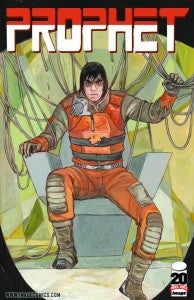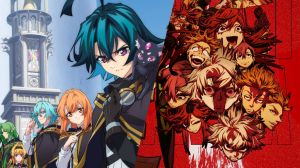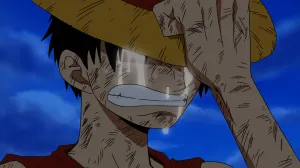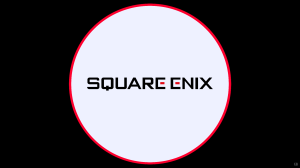It’s hard to guess exactly what people are expecting from the relaunch of Rob Liefeld’s long-dormant Extreme Comics imprint at Image. Certainly there’s a palpable excitement surrounding Erik Larsen illustrating the final remaining Supreme story by Alan Moore, but beyond that there hadn’t been a ton of buzz. This week, though, following Monday’s announcement by Image that it had sold out before retailers ever got their hands on it, Prophet #21 hits the stands.(In stark contrast not just to DC’s New 52 initiative but to long-standing comics conventions, the “new” Extreme books are not relaunching with a new #1 but instead picking up where the titles left off when they ended years ago.)The sell-out is justified, and the comic is the best single issue I’ve seen yet this month (year). There’s a mad genius at play in Brandon Graham and Simon Roy’s Prophet. Every creator is working in concert to make a comic that just breathes a certain kind of tone from the laconic, matter-of-fact narration to Richard Ballerman’s perfectly subdued color palette (the pale oranges and purples work here in exactly the way they didn’t on last month’s The Defenders #2). Even letterer Ed Brisson gets in on the fun, with text that feels like it’s half a point too small and gives the impression of a vast world where all the sounds are dulled and muted.Having had no previous experience with John Prophet, it’s impossible to compare the techno-organic horror show that is Prophet #21 with the twenty issues that came before it years ago, but the closest comparison for some of what’s seen here that I can immediately come up with is a kind of hybrid of Grant Morrison’s The Invisibles and those Bloodlines monsters that created Hitman, inhabiting a planet that feels a bit like Dune. But Bloodlines never looked this good, and The Invisibles only came close when it was at its best and most wildly creative. Roy’s art here fits the title perfectly and help to build a world in these twenty-odd pages that it would take even a good writer an entire story arc to develop with a lesser artistic partner. It’s a world that’s both stark and hyper-detailed, featuring sound effects and visual cues so well integrated into the art as to be endlessly entertaining for the initiated and an ideal first comic for someone who hasn’t read one in years.From a writing standpoint, Prophet features the same kind of anarchic mix of big ideas and grotesque monsters that has made much of Jeff Lemire’s work so remarkable to read. There’s a healthy mix of “awesome!” and “squick” on each page, and every aspect of the book has been thought out, from the extraterrestrial wildlife to the sentient UFO to the revelation—spoiler alert—that our hero’s diet has been made up largely of Soylent Green.The relentless roller coaster of strange-cool-gross-confusing-awesome makes reading the issue a pleasure, and infuses not just Prophet but the entire Extreme relaunch with the kind of energy and promise that’s rare in any art form, let alone one that generally plays things as safe as mainstream comics. Prophet is born of the same sense of wonder that allows DC and Top Cow to blow up their continuity and start over again. It’s an adventurous spirit that’s worthy of an industry and an art form that’s in flux, close to finding its identity for the next generation but not quite there yet.









